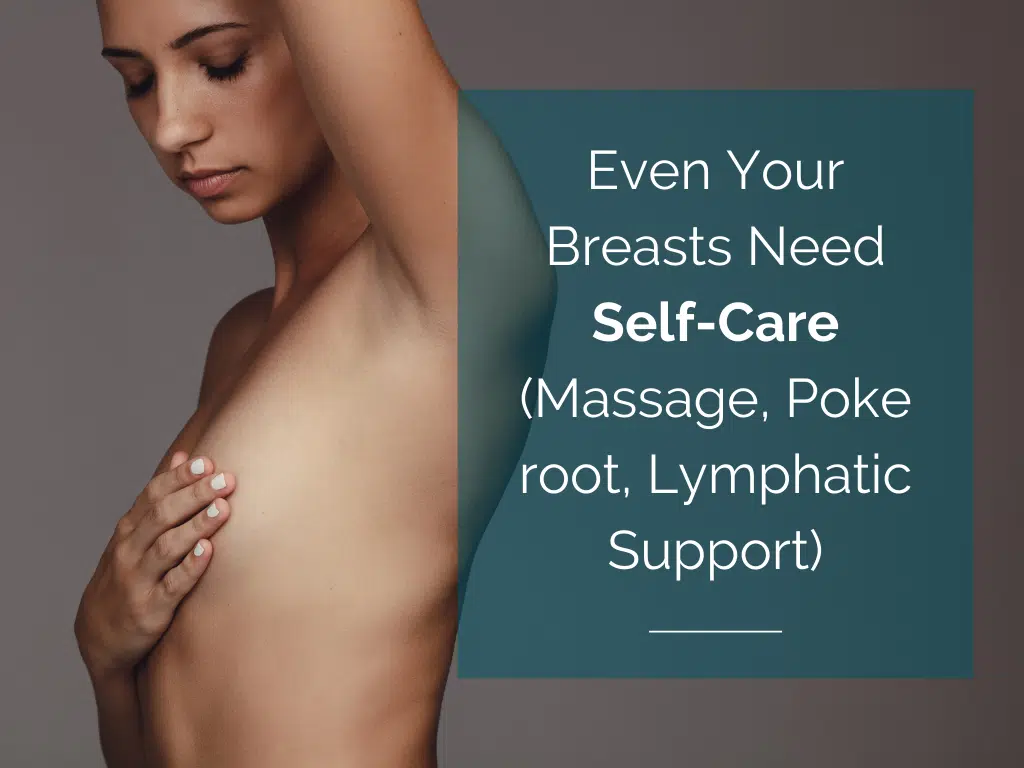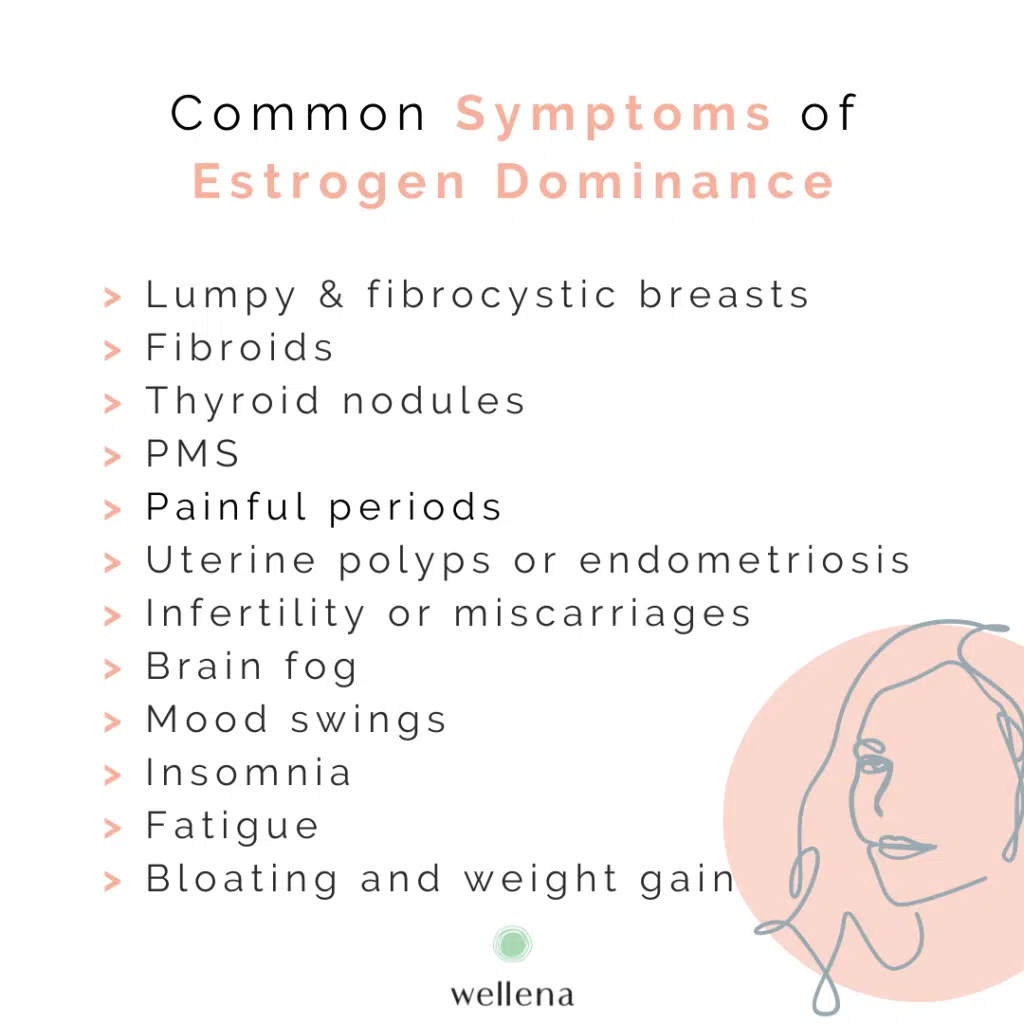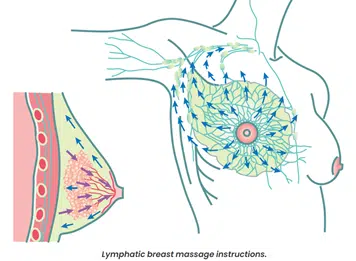What You Will Learn in This Article
- How Estrogen Dominance causes breast issues
- How the lymphatic system influences the breasts
- Magnesium for breast health
- Self-care techniques for the breasts
- Where to start
When a woman finds a lump on her breasts, it can be one of the scariest moments of her life. Immediately, her mind goes to a fear of cancer, then getting it properly diagnosed (with concern over which diagnosis technique is best), and then waiting for results… Next, she begins to worry about what lies ahead.
As we know it, the breast health industry is fear- and not prevention-focused. There’s no reason to live in fear when it comes to breast health and especially so if you understand your own body. Even if you have a genetic tendency toward breast issues (fibrocystic breasts, lumps, cancer, etc), it doesn’t mean you’re doomed to have them.
Still, it’s important not to wait until you need treatment. You may not need treatment at all if you keep yourself healthy. Prevention is key, and that’s where a good practice of breast self-care comes in.
First, why do so many women develop breast issues in the first place? It goes back to a common theme on this website: Estrogen Dominance.
How Estrogen Dominance Causes Breast Issues
Estrogen Dominance is the key cause of many of the breast issues women experience today, whether that’s fibrocystic breasts, lumps in the breasts, or breast cancers. It’s also involved in other estrogen-related cancers like uterine and ovarian cancer.
What exactly is estrogen dominance? Estrogen dominance is an imbalance in estrogen levels relative to progesterone, too much of the “aggressive estrogens” (E1 and E2) relative to protective E3, or the recirculating of estrogen metabolites that then act like estrogen. This condition is unfortunately common in our modern world, due to toxicity, dietary choices, and lifestyle factors.
A few symptoms of estrogen dominance to watch for are:
- Lumpy and fibrocystic breasts
- Fibroids
- Thyroid nodules
- PMS
- Painful periods
- Uterine polyps or endometriosis
- Infertility and miscarriages
- Brain fog
- Mood swings
- Insomnia
- Fatigue
- Bloating and weight gain (especially around the hips and thighs)
How The Lymphatic System Influences Breast Health
When it comes to self-care and the breasts, the lymphatic system plays a major role. A simple way of thinking of the lymphatic system is as though it’s a system of highways. This system of highways helps carry “trash” out of the body, keeping our organs and tissues clean. The trash is carried out through the lymphatic passages, lymphatic liquid, and the lymphatic nodes. The nodes filter the lymph fluid and remove bacteria, viruses, and other toxins from the body.
The lymphatic system is dense in the breast and underarm region of the body. That area is one of the centers of the lymphatic system. If stagnation occurs there, it can show up locally in the form of tender or fibrocystic breasts. Over time, it may even lead to breast cancer.
Because lymphatic flow tends to decrease with age, it’s more and more important to support our lymphatic system as we approach and go through menopause. (1)
We’ll talk about how to support the lymphatic system below.
Magnesium for Breast Health
Another potential imbalance to look at when you’re experiencing breast issues is a magnesium deficiency. Magnesium is an important mineral for detoxification and for hormone production — both important for achieving and maintaining good breast health.
Magnesium Helps Detox Excess Estrogen
Magnesium works with folate and the antioxidant glutathione to promote Phase II detoxification in the liver. During this process, estrogen metabolites are broken down and made water-soluble so your body can eliminate them through urine or stool. However, if your magnesium intake is too low, Phase II detoxification may not work as well. As a result, estrogen is recirculated in the body, leading to estrogen dominance.
Magnesium Helps in The Production of Sex Hormones
Magnesium is also involved in important processes that allow your body to produce the hormones estrogen, progesterone, and testosterone. If these are not produced in adequate amounts, and estrogen recirculates, again, you could develop estrogen dominance. You can get your magnesium tested, along with other important nutrients and blood markers directly through Your Labwork. You can order the Comprehensive Metabolic Panel if you’d like to get a picture of where your health is currently. You can also order a magnesium test on its own for as little as $30.
Magnesium May Help With Breast Pain
According to some research, magnesium may be helpful for breast pain (“mastalgia”). In a study of 38 women, taking 200 mg of magnesium for 2 months significantly improved PMS symptoms that accompanied fluid retention, including weight gain, edema, bloating, and breast pain. (2) The University of Michigan Health System recommends taking a magnesium supplement during the second half of one’s cycle to relieve breast pain associated with the menstrual cycle. (3)
To get your magnesium levels back up to a healthy level, I recommend starting with 300 mg of magnesium per day and then titrating up until you get a loose stool. You may need as much as 1200 mg per day to replenish your reserves. Lower the amount until your bowel movements return to normal. I recommend taking magnesium glycinate rather than oxide or citrate. I take our Wellena Magnesium Replenish.
Self-Care Techniques for the Breasts
Some of the best self-care ideas for breast health are around supporting lymphatic flow.
Lymphatic Massage
Lymphatic Massage or simple lymphatic drainage (SLD) is a special type of breast massage that you can learn to do on yourself. (4)
Here are some basic instructions with tips:
- When in the shower, first get your body soapy and slippery. Or, use our Happy Sisters Cream on clean skin in the morning or at night – not in the shower.
- First, decide which breast to start with. You’ll massage with your opposite-side hand.
- Next, use an open hand to sweep in the direction of the lymphatic flow (see arrow directions in the picture below).
- Sweep from nipple toward 12:00, 2:00, 4:00, 6:00, 8:00, and 10:00, two times per breast.
- Go slowly and gently deep, about three to five seconds per sweep.
- Visualize the breast as being made of a sponge containing thick honey. Slow, deep sweeps make the honey flow out.
- Visualize your breast being nourished, cleansed, and healed.
In the below video, you’ll learn how to massage your breasts to activate your lymphatic system. It’s very easy, and you can even do it while you’re in the shower. In this video, I used the Happy Sisters Cream.


